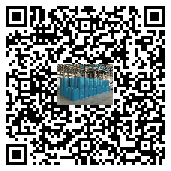Characteristics of titanium dioxide dispersants and their impact on the environment
1. Characteristics of titanium dioxide dispersants
Excellent dispersing performance:
Titanium dioxide dispersants can quickly break the agglomeration state between titanium dioxide particles
and make them evenly dispersed in the medium.
Dispersants effectively prevent the reagglomeration of titanium dioxide particles through electrostatic repulsion
or steric hindrance effects.
Good stability:
Dispersants can not only achieve uniform dispersion of titanium dioxide in a short time, but also maintain
the stability of the dispersion system for a long time.
Even under high temperature and strong light, dispersants can maintain good performance and are not
prone to degradation or failure.
Improve product quality:
Well-dispersed titanium dioxide can be more evenly distributed in the coating, thereby improving the
tinting power and hiding power of the coating.
Good dispersion effect can also improve the gloss, smoothness and durability of the coating, and improve
the overall quality of the product.
Reducing production costs:
By improving the dispersion efficiency of titanium dioxide, grinding time and energy consumption can be
reduced, thereby reducing production costs.
The use of dispersants can also reduce the content of inorganic pigments or fillers, further reducing the
cost of raw materials.
Environmental performance:
Some dispersants have environmental performance, such as reducing the use of organic solvents, which helps
to reduce environmental pollution during the production process.
However, it should also be noted that some dispersants may contain ingredients that are harmful to the environment,
so environmental protection regulations must be strictly followed when using and handling them.
2. Impact of titanium dioxide dispersants on the environment
Positive impact:
Improving the dispersion efficiency of titanium dioxide helps to reduce energy consumption and emissions during
the production process, thereby reducing negative impacts on the environment.
The use of dispersants can also improve the quality and performance of products, extend the service life of products,
and reduce waste generated by frequent product replacement.
Potential risks:
Some dispersants may contain ingredients that are harmful to the environment, such as heavy metals, organic pollutants,
etc. These ingredients may be released into the environment during use, causing pollution to soil, water sources and ecosystems.
During the production and disposal of dispersants, if they are not handled properly, they may also cause pollution to the
environment. For example, if wastewater, waste gas and waste residues in the production process are directly discharged without
proper treatment, it will have a serious impact on the environment.
Therefore, in order to maximize the positive effects of titanium dioxide dispersants and reduce their negative impact on the
environment, the following measures need to be taken:
Choose dispersants with good environmental performance and avoid using products containing ingredients that are harmful to the
environment.
Strictly control emissions during the production process to ensure that the treatment of all chemical substances meets environmental
standards.
Strengthen safety education, improve users' awareness of the correct handling of titanium dioxide dispersants, and reduce potential
threats to the environment and human health.
In summary
Titanium dioxide dispersants have significant advantages in improving product quality and reducing production costs, but at the
same time, it is also necessary to pay attention to their impact on the environment and take corresponding measures to reduce
potential risks.


